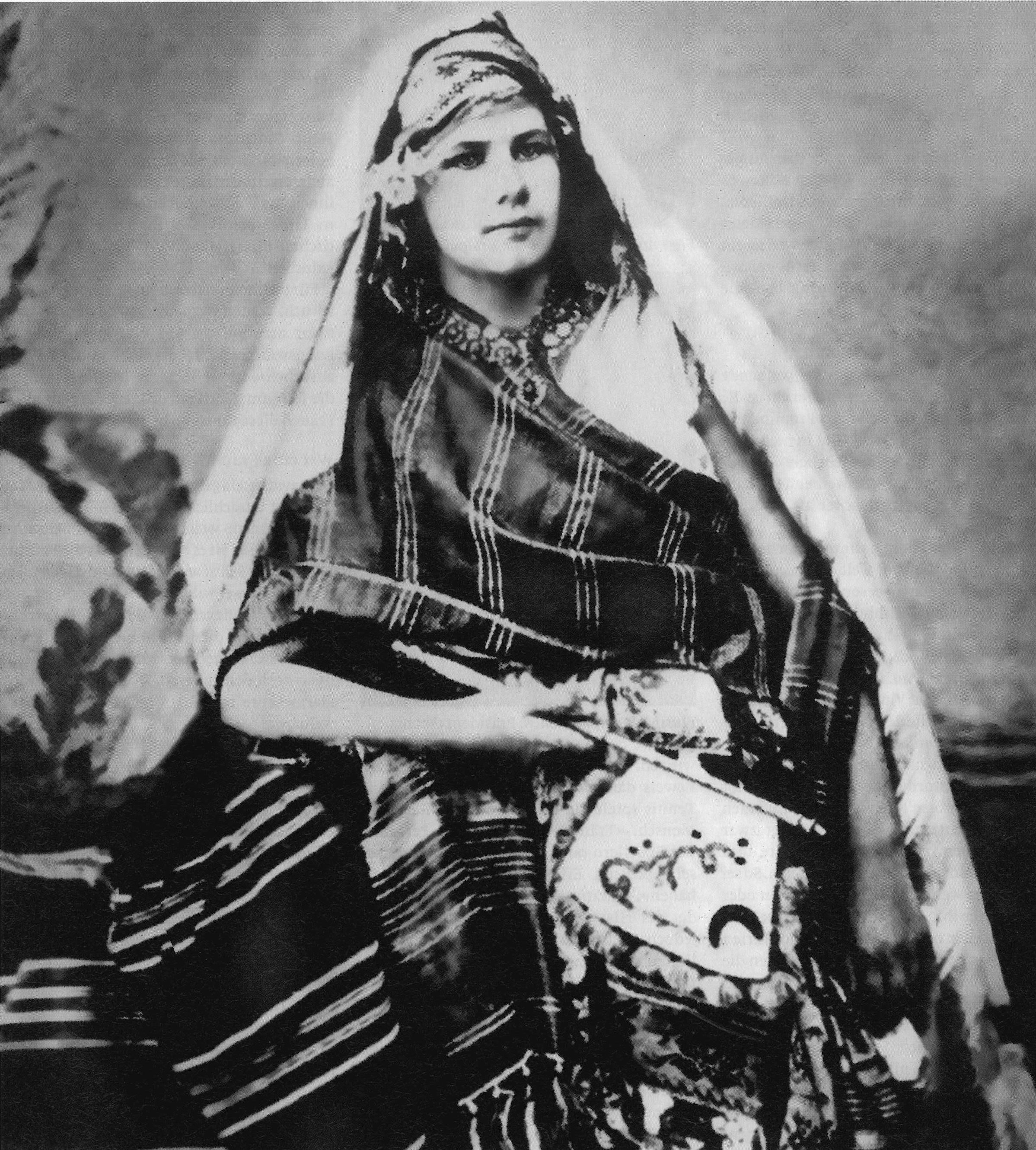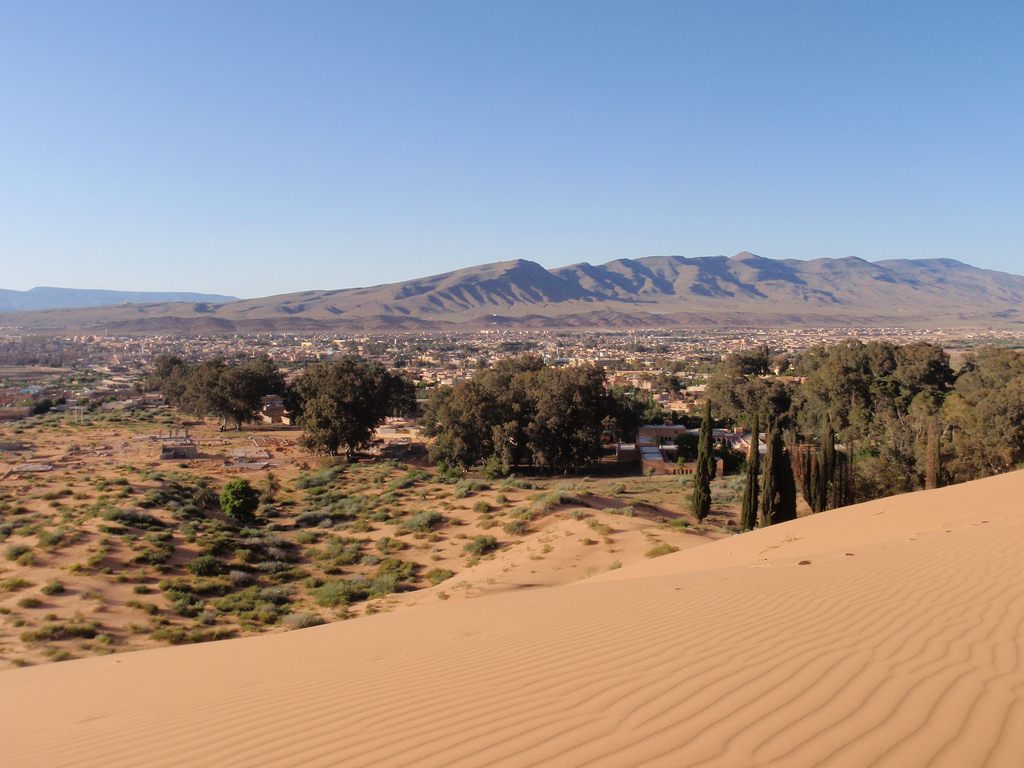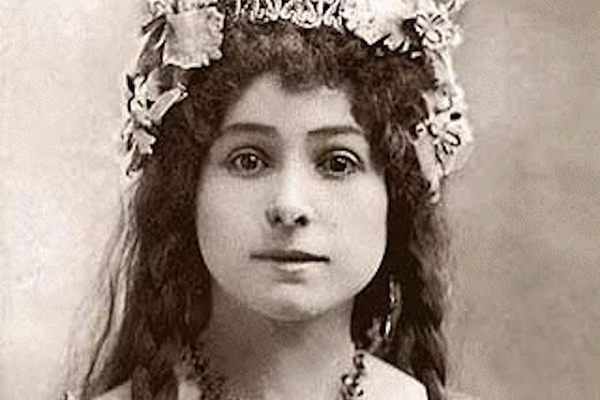The Cross-Dressing Heiress Who Decamped to the Algerian Desert
 Isabelle Eberhardt in the Sahel desert, circa 1900. (Photo: Wikipedia Commons)
Isabelle Eberhardt in the Sahel desert, circa 1900. (Photo: Wikipedia Commons)
This is the third part of a five-part series about early female explorers. The first and second parts are here.
Just as the 19th century was drawing to a close, a penniless 22-year-old explorer and author named Isabelle Eberhardt left an unhappy life in Switzerland to roam Algeria, join a mystical Sufi Muslim sect, and dress as the male Arab she saw herself as. Following an assassination attempt against her, the woman sometimes referred to as “the first hippie” died in a flash flood in the Sahara at the age of 27. Her vivid writings and travelogues were published posthumously.
“I will never be content with a sedentary life; I will always be haunted by thoughts of a sun-drenched elsewhere,” wrote Eberhardt in The Nomad: The Diaries of Isabelle Eberhardt.
Born in Geneva to an aristocratic mother and the family tutor—an ex-priest turned anarchist named Alexandre Trofimovsky—Isabelle Eberhardt was fluent in six languages, including Arabic, as a 16-year old. By the age of 20 she had converted to Islam, and when both her parents died suddenly in the late 1890s, she severed all her ties to Europe.
Algeria was calling.
For all of her family’s wealth, Eberhardt was an illegitimate baby and therefore not eligible for an an inheritance. She had to earn passage to Algeria using her wits. Disguising herself as a boy—something she’d been doing from an early age with the encouragement of her father—she worked as a Marseille dockhand until she could afford the ferry crossing.
Having already visited Algeria with her mother once before, Eberhardt settled into life in the coastal city of Bône (now Annaba). Dressing as a young male student and calling herself Si Mahmoud Essaadi, she scandalized the French settlers with her wild living, heavy drinking, sexual promiscuity, visits to brothels, and fondness for kief, a potent form of hashish. Perhaps most disgraceful of all, in the minds of the other foreigners, Eberhardt eschewed the colonial quarters to live in the Arab part of town.
“I’ve often been criticized for liking too well the ordinary run of people. But where, I ask, is life, if not among the people?” she wrote.
She may not have been accepted by the colonists, but she gained the respect of local sheikhs.
Eberhardt wasn’t an anthropologist or an Orientalist, she wasn’t trying on a new life for a few years before heading back to Europe with a journal stuffed full of “exotic” tales of life in North Africa. When Eberhardt prayed to Allah, she wasn’t play-acting or in disguise like earlier explorers such as Lawrence of Arabia and Richard Burton: she was sincere. This was it. This was all she had.
Perhaps surprisingly, her cross dressing was far better accepted by Algerians than it was among the European aristocrats of 19th century Geneva, where she was often treated cruelly. (And the cross-culture gender crossing went down even less well. “We can understand your wearing men’s clothes, but why wouldn’t you dress up as a European man?” was, apparently, something she heard quite often from French officers.) Traditional courtesy and discretion led North Africans to respect her decision to dress as a boy, though few were actually fooled by her get-up.

A young Isabelle Eberhardt dressed as a boy in Switzerland; Eberhardt as an adult. (Photo: Wikipedia Commons)
A free-thinking, independent woman, Eberhardt was happiest when living “like a stray dog,” riding horseback through the Sahara and sleeping alone under the stars, unrestricted by the constraints of her youth and sex.
“After a short, moonlit night spent on a mat in front of the Moorish cafe in Beni Ounif, I awoke happy, with the euphoria that takes me when I have slept outdoors under the great sky, and when I’m about to set off on a journey,” she wrote from Algeria.
Free from the artificial atmosphere of Europe that she felt so limited by, Eberhardt became a member of the secretive Qadiriyya Sufi sect. An order dedicated to helping the poor, the group was strongly opposed to French colonial rule. Following initiation, Eberhardt wrote dozens of stories and articles celebrating Maghreb culture and lobbying against French rule, and was frequently caught up in violent anti-colonialism protests.
Such rebellion was what likely led to the 1901 assassination attempt against her. In the desert town of Behima, Eberhardt was attacked by a local man with a saber, and her left arm was nearly severed. Although her assailant was probably bribed by the French authorities, Eberhardt begged that his life be spared at a court hearing.
Her pleas were successful, but following the attack she was expelled for being a provocative presence in France’s North African colonies.
Eberhardt married her great love, the Algerian sergeant Slimane Ehnni, so that she could move back to the Sahara. Fluent in Arabic and now married to a Maghrebian, Eberhardt had unheard-of access to Northern African society. And by writing of the degrading effects of colonial rule and working as a war reporter in southwestern Algeria, her writing did much to revise the paternalistic and romantic Orientalist rhetoric of the time.
But Eberhardt’s hard living took its toll. By age 27 she had no teeth, had lost nearly all of her hair, and was frequently in the hospital for malaria and what was likely syphilis.
In 1904, Eberhardt died trying to save her husband’s life after a flash flood in the 2,000-person military town of Aïn Séfra. Ehnni survived after their modest clay home collapsed on them, but his wife drowned. Her evocative journals were published posthumously in three collections, including In the Shadow of Islam, a picaresque set in the desert that is told from the point of view of a young woman who travels dressed as a man, and the extraordinary story collection The Oblivion Seekers, which was translated by fellow writer-nomad Paul Bowles. A testament to the esteem held for her in Algeria, you can still visit the Rue Isabelle Eberhardt in Algiers today.
 Ain Sefra, the Algerian village at the base of the Atlas Mountains where Isabelle Eberhardt drowned. (Photo: dagget.fr/Flickr)
Ain Sefra, the Algerian village at the base of the Atlas Mountains where Isabelle Eberhardt drowned. (Photo: dagget.fr/Flickr)









Follow us on Twitter to get the latest on the world's hidden wonders.
Like us on Facebook to get the latest on the world's hidden wonders.
Follow us on Twitter Like us on Facebook